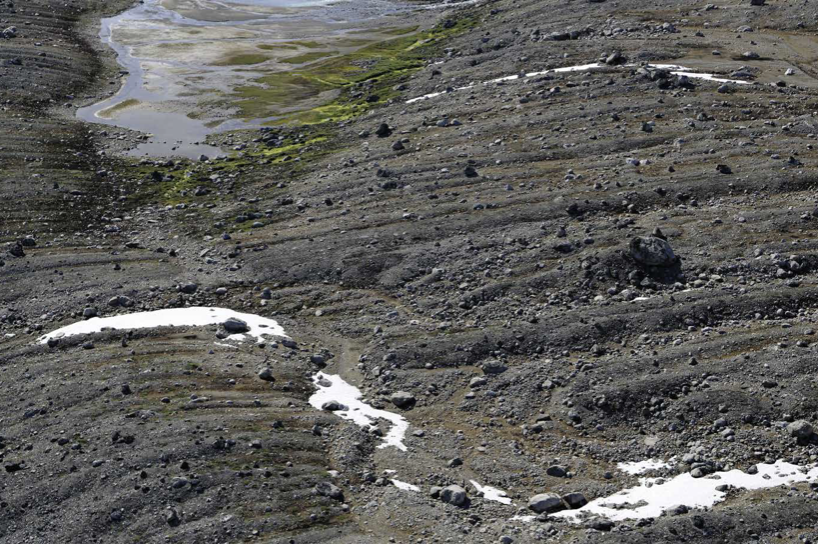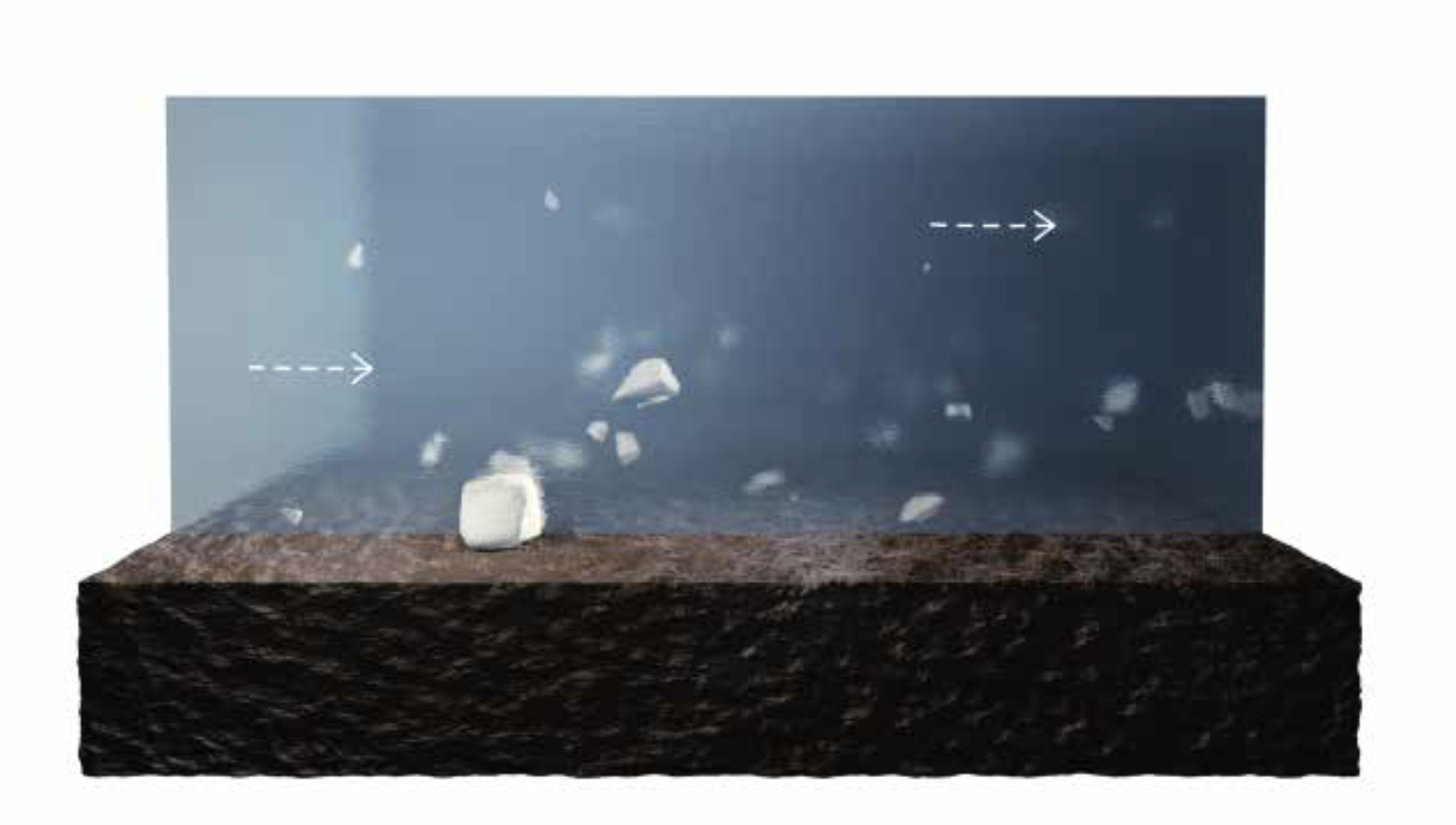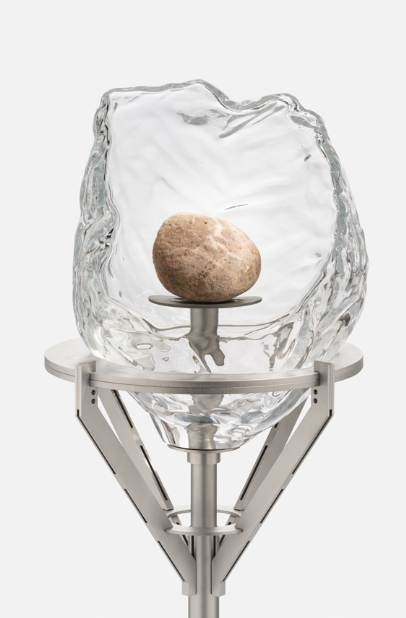
THE ENORMOUS FORCES OF THE ICE SHEET
The bullet-nose blocks contain important information about glaciers past and present. They were dragged by the ice across the ground so that they lie parallel at the melting of the ice.
This makes it possible to determine in what direction the ice moved – even thousands of years after the ice had melted.

Why is the stone called a bullet-nose block?
The stone blocks have striations. What are they called? Find answer on page 44 in the book.
How would you describe the picture?
The ice sheet is always on the move and contains such enormous force that it can crush even the largest boulders to fine gravel on its way to the coast.
Here you see a section of the ice mass moving over the crust of the ground. On page 46 in the book there are three more sections.

Explain what makes the ice move and why it works as a powerful plane. Here you will need your earlier work with slide 6.
The size of the ice sheet depends on two thing:
- how much snow falls on Greenland
- how much ice melts from the surface of the ice and calves at the glacier front
In recent years more of the ice has melted than has been added with new snow.
This makes the global sea level rise.
If all of the ice sheet melted the global sea level would rise by 7.2 metres.

The ice sheet is covering less and less of Greenland. This is caused by climate change. The weather is becoming warmer and warmer.
Can something be done to stop the climate changes?
The bullet-nose blocks contain important information about glaciers past and present. They were dragged by the ice across the ground so that they lie parallel at the melting of the ice.
This makes it possible to determine in what direction the ice moved – even thousands of years after the ice had melted.

Why is the stone called a bullet-nose block?
The stone blocks have striations. What are they called? Find answer on page 44 in the book.
How would you describe the picture?
The ice sheet is always on the move and contains such enormous force that it can crush even the largest boulders to fine gravel on its way to the coast.
Here you see a section of the ice mass moving over the crust of the ground. On page 46 in the book there are three more sections.

Explain what makes the ice move and why it works as a powerful plane. Here you will need your earlier work with slide 6.
The size of the ice sheet depends on two thing:
- how much snow falls on Greenland
- how much ice melts from the surface of the ice and calves at the glacier front
In recent years more of the ice has melted than has been added with new snow.
This makes the global sea level rise.
If all of the ice sheet melted the global sea level would rise by 7.2 metres.

The ice sheet is covering less and less of Greenland. This is caused by climate change. The weather is becoming warmer and warmer.
Can something be done to stop the climate changes?




